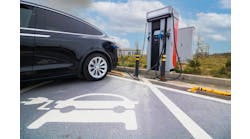Intersections offer a challenge to traffic safety professionals across the country because a third of all fatal crashes occur at intersections. This is primarily caused by right-angle crashes that result from a driver failing to recognize the hazard of oncoming traffic or misjudging the distance or speed of the oncoming traffic. Intersection Conflict Warning Systems (ICWS) offer a flexible intermediate cost solution.
Traditional low-cost safety improvements can be effective for specific situations but are not always successful in addressing this safety challenge.
Roadway reconstruction improvements such as reduced conflict intersections or grade-separated interchanges are extremely effective but can be cost-prohibitive or impractical to deploy on a system-wide basis.
ICWS offer an intermediate cost solution that can be more effective than low-cost solutions in reducing fatal and serious injury crashes. ICWS also offer a design flexibility that allows deployment at a wide range of intersections.
Intersection-related crashes account for 33% of statewide fatal crashes, and 66% of these fatal intersection crashes occur in rural areas, making them one of Minnesota’s safety emphasis areas. This over-representation of fatal intersection crashes in rural areas combined with very low crash densities frames a significant safety planning challenge: How can the most at-risk intersections be identified as candidates for safety investments?
The Minnesota DOT identified factors other than crashes that contribute to the risk of collisions, developed a method to screen rural intersections, and established criteria to identify at-risk rural, STOP-controlled intersections. These were then used to identify the at-risk intersections and identify the appropriate safety solutions for these at-risk intersections during the development of the Minnesota District and County Road Safety Plans.
MnDOT undertook the deployment of 50 ICWS during the Rural Intersection Conflict Warning System (RICWS) project. The RICWS systems all follow the same general design and use the same hardware. Detectors on the minor road trigger the flashing beacons on the ENTERING TRAFFIC major road sign approximately 800 ft in advance of the intersection. Detectors on the major road trigger flashers on the TRAFFIC APPROACHING minor road sign at the intersection.
Intersection safety has improved with the implementation of ICWS. The RICWS project produced several lessons learned that other agencies can use when considering ICWS deployment. The first is to use standard equipment that maintenance staff have been trained to use and repair. The RICWS components generally used hardware from MnDOT’s Approved Products List and the systems are controlled by a standard traffic-signal controller. The RICWS systems have been blended into the traffic-signal maintenance program and MnDOT set up guidelines for maintaining the systems.
The second finding is that the RICWS systems have been found to be reliable. The systems were maintained during a three-year warranty period. MnDOT monitored repairs during this period and found that each site needed maintenance once per year on average which is within normal expectations. Additionally, the sites should be given routine maintenance, such as one time per year, and to verify proper operation.
Lastly, it was found that the system needs to be reliable from a detection accuracy standpoint. This helps build driver confidence and trust. It also ensures a safer system and higher agency trust that the system is out there working correctly. MnDOT contracted an independent study that found that the system responded to 99.98% of vehicles that approached the intersection. This high detection reliability meets the objective of establishing driver confidence and trust.
Beyond the RICWS project, new ICWS technologies derived from Connected and Autonomous Vehicle (CAV) development may become prominent in the coming years. This may advance ICWS, so that in-vehicle alerts or even automated assistance are provided to drivers directly. Because of the large safety benefit, ICWS technologies are expected to play a large role in the improvement of safety from such technologies.



